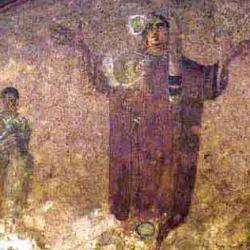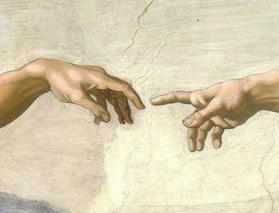In Making Good, Trevor Hart summarizes an earlier vision of artistry as craftsmanship: “a human activity of skilled making or forming” (22), and unpacks several dimensions of this definition.
Craft is not “a mode of ‘making’ linked primarily to the realization or gratification of an artist’s burning individual vision or his or her need to express some inner emotional excess.” On the contrary, craft is a “social phenomenon” (23), essentially tied with tradition, apprenticeship, and collaboration: “Craft is bound up with a certain sort of social bond, having its sights clearly set on practices and outputs of making that will serve the common good rather than putting individual artistic vision or self-realization at the head of the agenda. . . . the craftsman only rarely works in anything approaching splendid isolation, and his or her work is always identifiably the produce of a wider collective enterprise” (26).
Though craft is distant from some later conceptions of artistry, it is not merely a practical art. There is an essential gratuity to craftsmanship: “Craftsmanship . . . is not tied to an overbearing sense of short-term economic ‘efficiency,’ involving what may well, when measured by such consideration,s appear to be forms of extravagant waste but which, on another way of viewing things, are of the very essence of the sort of constructive engagement with the world that artistry properly is” (25).
Hart’s discussion of craft is set against the backdrop of an exploration of the biblical notion of creation and creativity. Hart is well aware that the Old Testament reserves the verb bara’, “create,” to God, and sees that this highlights the “utter incomparability of Israel’s God” (75). He emphasizes that God’s creativity is not limited to the creation of the physical cosmos. Wherever and whenever God “inagurate[s] wholly unprecedented and unconditioned new beginnings” the verb is used. There are “no limits placed on what is possible under the rubric of bara’, because the relevant conditions of possibility are themselves . . . ones generated only in and with the creative act itself” (81).
Only God can create the novelties and their conditions of possibility. Yet Hart is equally insistent that Scripture highlights human creativity as an essential dimension of human being in the world. While the “work of human hands” can be idolatrous, it is not essentially so. In fact, “rather than the creative work of human hands being excluded from consideration, it remains central . . . to the creative scheme of thing, which involves a relational dynamic simultaneously from above and from below.”
He avoids “synergism” and “co-creation” as models, preferring a christological notion of creativity that “has its objective basis and its abiding source in the once-for-all incarnation of the eternal Son” (57). Yet this doesn’t keep Hart form insisting that “Got puts himself willingly in a place where he needs the ‘creative’ work of human hands to complement that of his own if the unfinished project of creation is finally to come to fruition” (83).
So the analogy between divine and human craftsmanship is real. For the Triune God as for human beings, the work of creation is a “collaborative” enterprise, a skilled making, marked not by niggardly efficiency but by gratuitous extravagance.















